Analysis of the Relationship between Selected Ship and Propulsion System Characteristics and the Risk of Main Engine Turbocharger Explosion
Abstract
:1. Introduction
- Developing turbocharger damage (undetected in the absence of periodic maintenance).
- Air hose becoming completely detached.
- Air leaks between the compressor and engine.
- Erosion and deterioration of the piston crown.
- Loss of signal to the electronic actuator for the wastegate.
- Inappropriate operation of VNT (variable nozzle turbine) control.
- Tear in the air hose.
- Restrictions in the air intake filter or pipework (excessively dirty filter, improperly performing water-wash on the turbine and compressor side and/or dry-cleaning on the turbine side).
- The wastegate or VNT mechanism has been set incorrectly.
- Worn injectors.
- Feeding the engine with fuel of improper physical and chemical parameters.
- Installing an incorrect turbo.
- Modification of turbocharger, scavenging system, fuel injection system, or control units (incl. fuel injection control maps/algorithms).
- Incorrect movement or restrictions in the VNT mechanism.
2. Materials and Methods
- The number of explosions in each year of the study period and the frequency of turbocharger explosions;
- The number of explosions with respect to the type of ship and the age of the ship at the time of the explosion;
- The number of explosions with respect to the type and design of the main engine.
3. Results and Discussion
3.1. Number of Explosions over the Years
3.2. Age and Type of Ship
3.3. Number of Explosions by Engine Type
- Duty cycle (2-stroke engine vs. 4-stroke engine);
- Construction of the crank-piston mechanism (trunk piston engine vs. crosshead engine);
- Engine speed (low-speed engine vs. medium-speed engine vs. high-speed engine);
- Cylinder layout (in-line engine vs. vee engine);
- Power per cylinder (medium-power engine vs. high-power engine vs. very high-power engine);
- Number of cylinders.
4. Conclusions
Author Contributions
Funding
Institutional Review Board Statement
Informed Consent Statement
Data Availability Statement
Conflicts of Interest
Appendix A
| Ship Type | Share of the World Fleet Averaged for 1977–2022 (%) |
|---|---|
| Oil tankers (%) | 33.88 |
| Bulk carriers (%) | 38.14 |
| General cargo (%) | 8.91 |
| Container ships (%) | 10.00 |
| Other types of ships (%) | 9.07 |
| Engine Design | Average Share of 2-Stroke Engine Market | Average Share of 4-Stroke Engine Market |
|---|---|---|
| MAN B&W | 80 | 23 |
| Wärtsilä/Sulzer | 18 | 47 |
| Mitsubishi | 2 | 0 |
| MaK | 0 | 5 |
| Others | 0 | 25 |
References
- Chybowski, L. The Initial Boiling Point of Lubricating Oil as an Indicator for the Assessment of the Possible Contamination of Lubricating Oil with Diesel Oil. Energies 2022, 15, 7927. [Google Scholar] [CrossRef]
- Li, C.; Zhang, H.; Zhang, Y.; Kang, J. Fire Risk Assessment of a Ship’s Power System under the Conditions of an Engine Room Fire. J. Mar. Sci. Eng. 2022, 10, 1658. [Google Scholar] [CrossRef]
- Krystosik-Gromadzińska, A. Engine room fire safety. Sci. J. Marit. Univ. Szczec. Zesz. Nauk. Akad. Mor. W Szczec. 2016, 47, 29–35. [Google Scholar] [CrossRef]
- Kantharia, R. The Ultimate Guide to Engine Room Operations; Marine Insight: Bangalore, India, 2019. [Google Scholar]
- Krystosik-Gromadzińska, A. Affordable hybrid thermography for merchant vessel engine room fire safety. Sci. J. Marit. Univ. Szczec. Zesz. Nauk. Akad. Mor. W Szczec. 2019, 57, 21–26. [Google Scholar] [CrossRef]
- Chybowski, L.; Wiaterek, D.; Jakubowski, A. The Impact of Marine Engine Component Failures upon an Explosion in the Starting Air Manifold. J. Mar. Sci. Eng. 2022, 10, 1850. [Google Scholar] [CrossRef]
- Insight Hull and Machinery Incident—Turbocharger Damage. Available online: https://www.gard.no/web/updates/content/51669/hull-and-machinery-incident-turbocharger-damage (accessed on 4 December 2022).
- Anantharaman, M.; Khan, F.; Garaniya, V.; Lewarn, B. Reliability Assessment of Main Engine Subsystems Considering Turbocharger Failure as a Case Study. TransNav Int. J. Mar. Navig. Saf. Sea Transp. 2018, 12, 271–276. [Google Scholar] [CrossRef]
- Schieman, J. ABB Turbocharging. Operating Turbochargers—Collection of Articles by Johan Schieman Published in Turbo Magazine 1992-1996; ABB Turbo Systems: Baden, Germany, 2010. [Google Scholar]
- Chybowska, D.; Chybowski, L.; Souchkov, V. R&D in Poland: Is the Country Close to a Knowledge-Driven Economy? Manag. Syst. Prod. Eng. 2018, 26, 99–105. [Google Scholar] [CrossRef]
- Jensen, M.; Jakobsen, S. Increased Protection of Turbochargers against Overspeed. Service Letter SL2015-599/PEKI; MAN Diesel and Turbo: Augsburg, Germany, 2015. [Google Scholar]
- Borkowski, T.; Kowalak, P.; Myśków, J. Vessel main propulsion engine performance evaluation. J. KONES 2012, 19, 53–60. [Google Scholar] [CrossRef]
- MARS Turbocharger explosion and engine room fire. Naut. Inst. Mar. Alerting Rep. Scheme 2010, 217. Available online: https://www.nautinst.org/technical-resources/mars.html (accessed on 5 December 2022).
- Wabtec Corporation. Melett Overspeeding; Wabtec Corporation: Pittsburgh, PA, USA, 2018. [Google Scholar]
- Grzywacz, S.; Stępniak, A.; Listewnik, J. Analiza Awarii Silników Głównych i Pomocniczych; ITESO, Wyższa Szkoła Morska w Szczecinie: Szczecin, Poland, 1988. [Google Scholar]
- Ubowska, A.; Szczepanek, M. Engine rooms fire safety—Fire-extinguishing system requirements. Sci. J. Marit. Univ. Szczecin Zesz. Nauk. Akad. Morskiej w Szczecinie 2016, 48, 51–57. [Google Scholar] [CrossRef]
- Hughes, C.N. Lessons to learn from turbocharger explosions. MER Mar. Eng. Rev. 2000, 32. [Google Scholar]
- Babrauskas, V. Ignition Handbook; Society of Fire Protection Engineers: Gaithersburg, MD, USA, 2003. [Google Scholar]
- Marine Diesels Crankcase Explosions—Reducing Risks. Available online: http://www.marinediesels.info/members/Crankcase Explosions/Reducing Risks.htm (accessed on 5 December 2022).
- Australian Transport Safety Bureau. Independent Investigation into the Equipment Failure on Board the Australian Registered Bulk Carrier Goliath in Bass Strait 22 September 2002 and off Jervis Bay, New South Wales 12 February 2003; Australian Transport Safety Bureau: Canberra, Australia, 2006; ISBN 1-921092-46-7.
- Sawicka, M.; Szczepanek, M. Legal conditions regarding the energy efficiency of fishing vessels. Zesz. Nauk. Akad. Mor. W Szczec. Sci. J. Marit. Univ. Szczec. J. Marit. Univ. Szczec. 2013, 36, 170–174. [Google Scholar]
- Szczepanek, M. Biofuels as an alternative fuel for West Pomeranian fishing fleet. J. Phys. Conf. Ser. 2019, 1172, 012074. [Google Scholar] [CrossRef]
- Kowalak, P.; Myśków, J.; Tuński, T.; Bykowski, D.; Borkowski, T. A method for assessing of ship fuel system failures resulting from fuel changeover imposed by environmental requirements. Eksploat. i Niezawodn. Maint. Reliab. 2021, 23, 619–626. [Google Scholar] [CrossRef]
- SINTEF, NTNU. OREDA. Offshore and Onshore Reliability Data. Volume 1—Topside Equipment, 6th ed.; SINTEF, NTNU: Trondhaim, Norwegia, 2015; ISBN 978-82-14-05948-9. [Google Scholar]
- Wiaterek, D.; Chybowski, L. Assessing the topicality of the problem related to the explosion of crankcases in marine main propulsion engines (1972–2018). Sci. J. Marit. Univ. Szczec. Zesz. Nauk. Akad. Mor. W Szczec. 2022, 71, 33–40. [Google Scholar]
- IHS Global Limited Sea-web Casualty & Events. Available online: https://maritime.ihs.com/ (accessed on 2 February 2022).
- Voytenko, M. LAURA MAERSK Engine room after Blast, Photos. Available online: https://www.fleetmon.com/maritime-news/2020/29885/laura-maersk-engine-room-after-blast-photos/ (accessed on 20 November 2022).
- Machinery Spaces Reason of Turbocharger Damages and Recommendations to Avoid Turbo Failure. Available online: http://www.machineryspaces.com/turbo-failure-prevention.html (accessed on 20 November 2022).
- FireNet Special Interest Network Maritime Case Histories. Available online: http://fire.org.uk/marine/incidents.htm (accessed on 5 December 2022).
- Chybowski, L. Dataset for the Main Engines Turbocharger Explosions (1977–2022). Available online: https://data.mendeley.com/datasets/pjyckryffy/1 (accessed on 15 December 2022).
- Statista Number of Ships in the World Merchant Fleet as of January 1, 2022, by Type. Available online: https://www.statista.com/statistics/264024/number-of-merchant-ships-worldwide-by-type/ (accessed on 5 December 2022).
- United Nations Conference on Trade and Development UNCTAD Stat. Available online: https://unctadstat.unctad.org/EN/ (accessed on 2 December 2022).
- Research In China Global and China Marine Diesel Engine Industry Report 2012–2013. Available online: http://www.researchinchina.com/Htmls/Report/2013/6704.html (accessed on 2 December 2022).
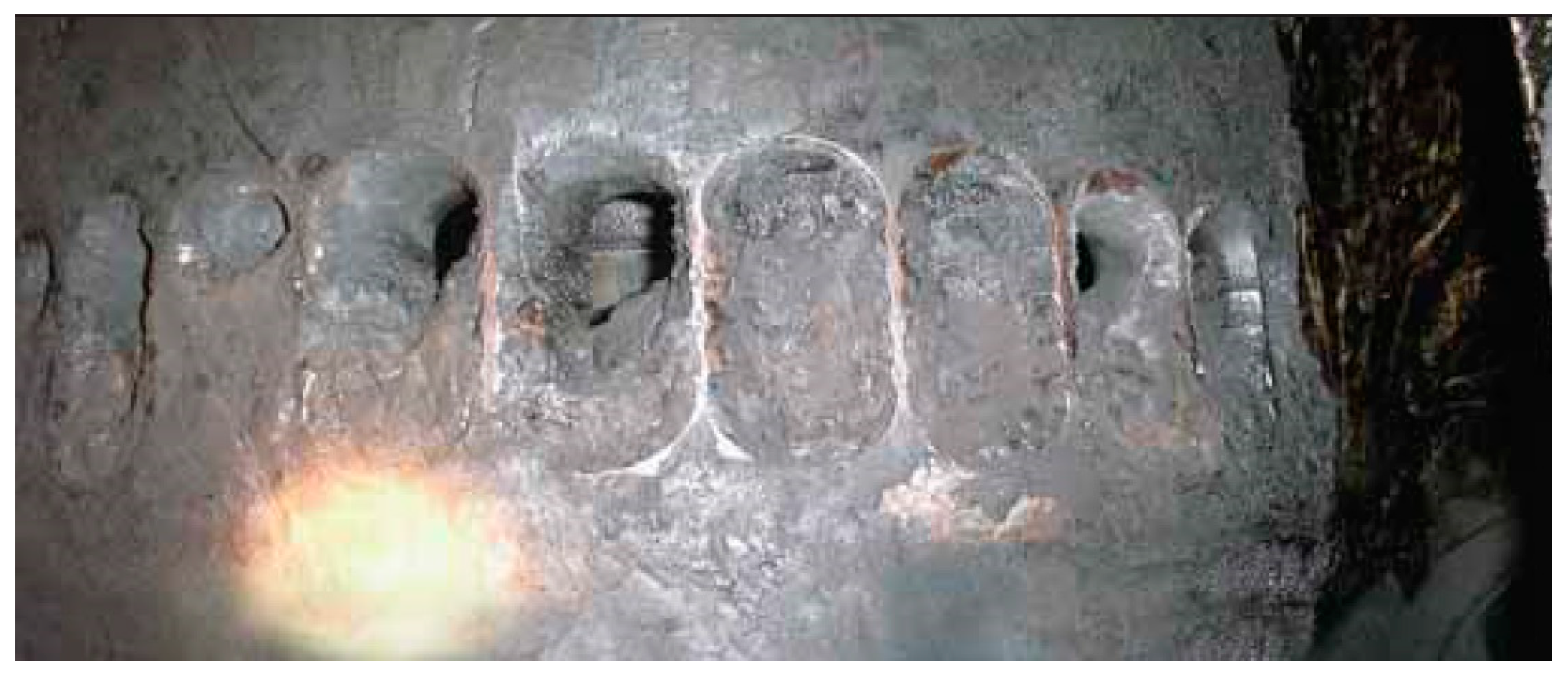
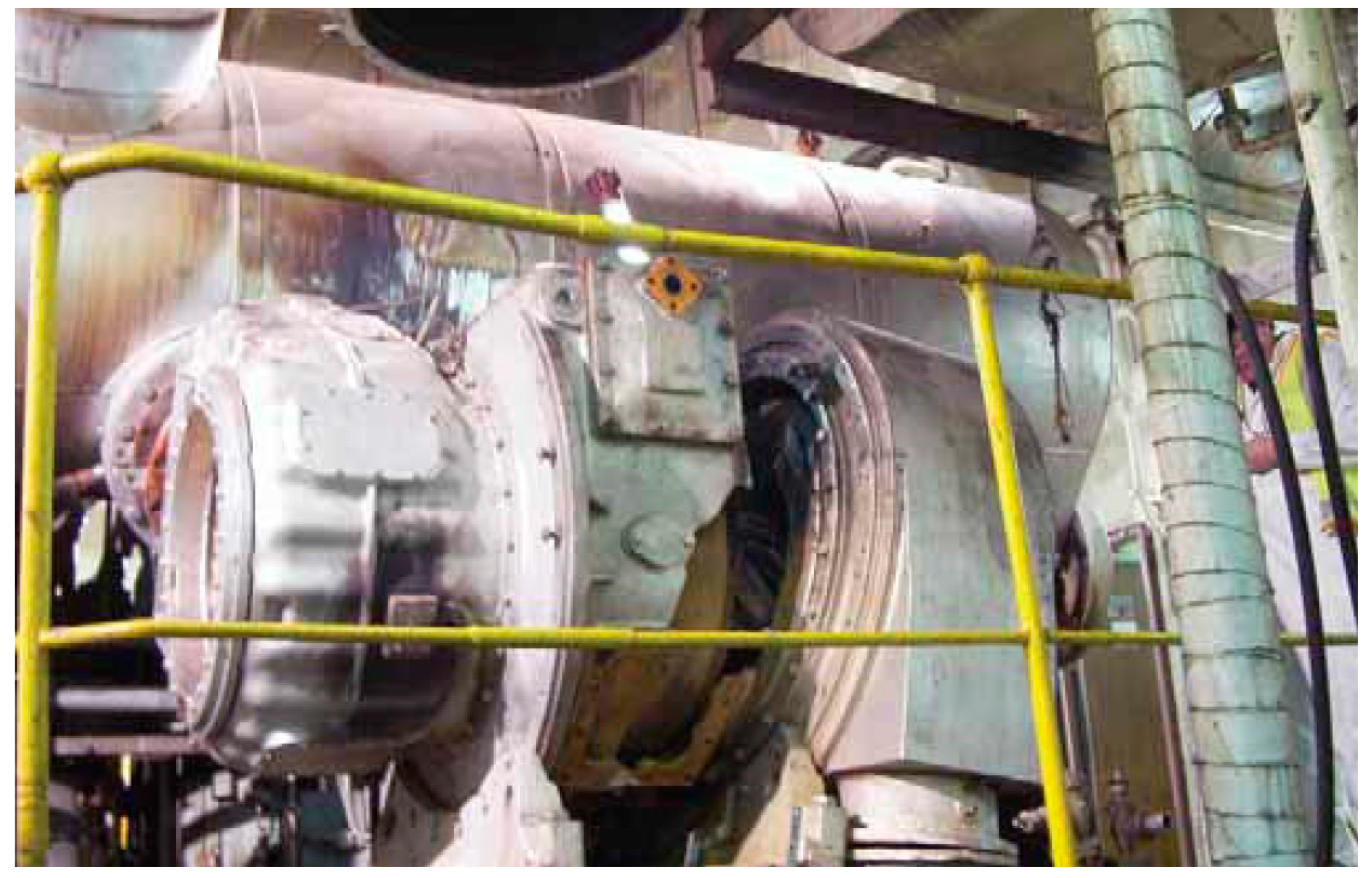
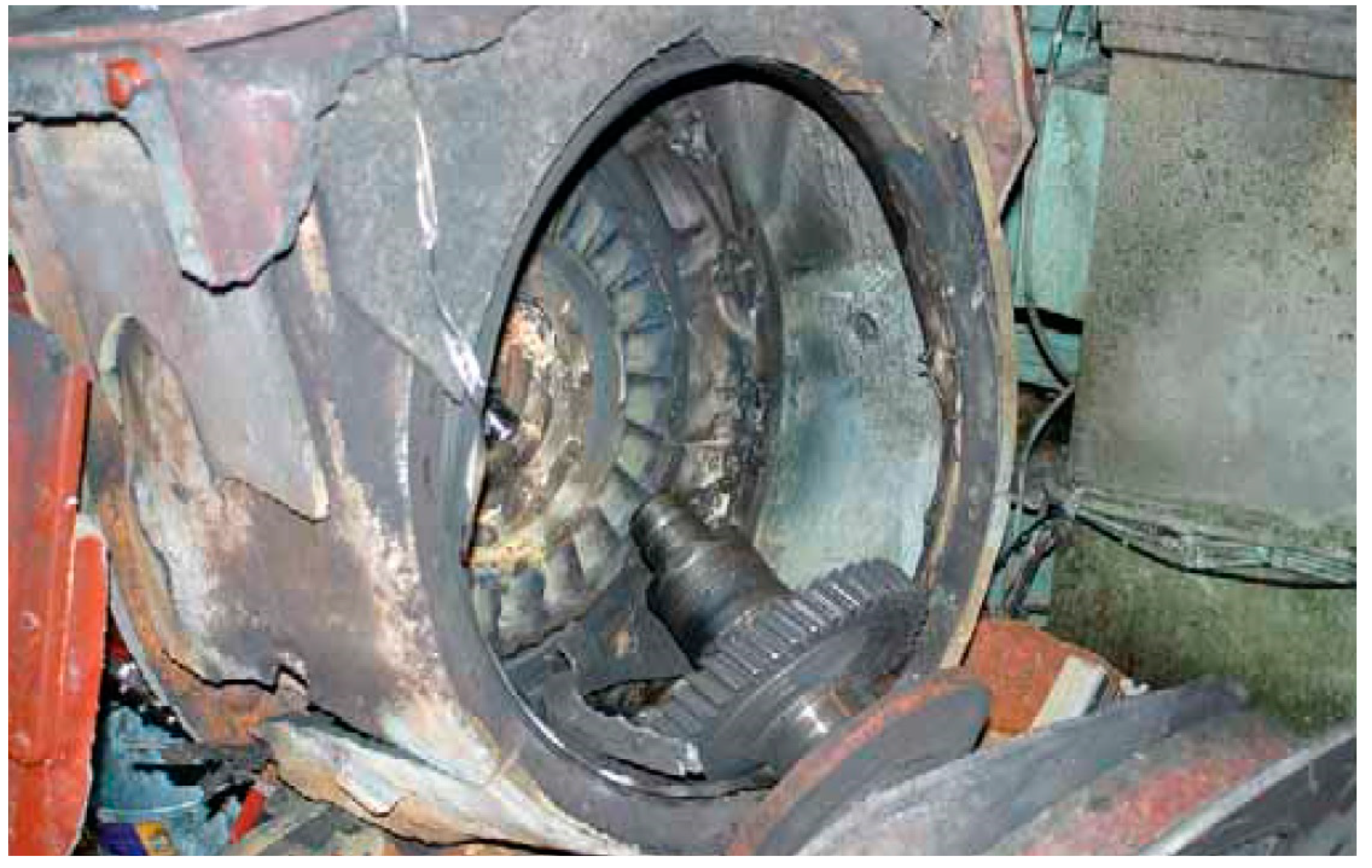
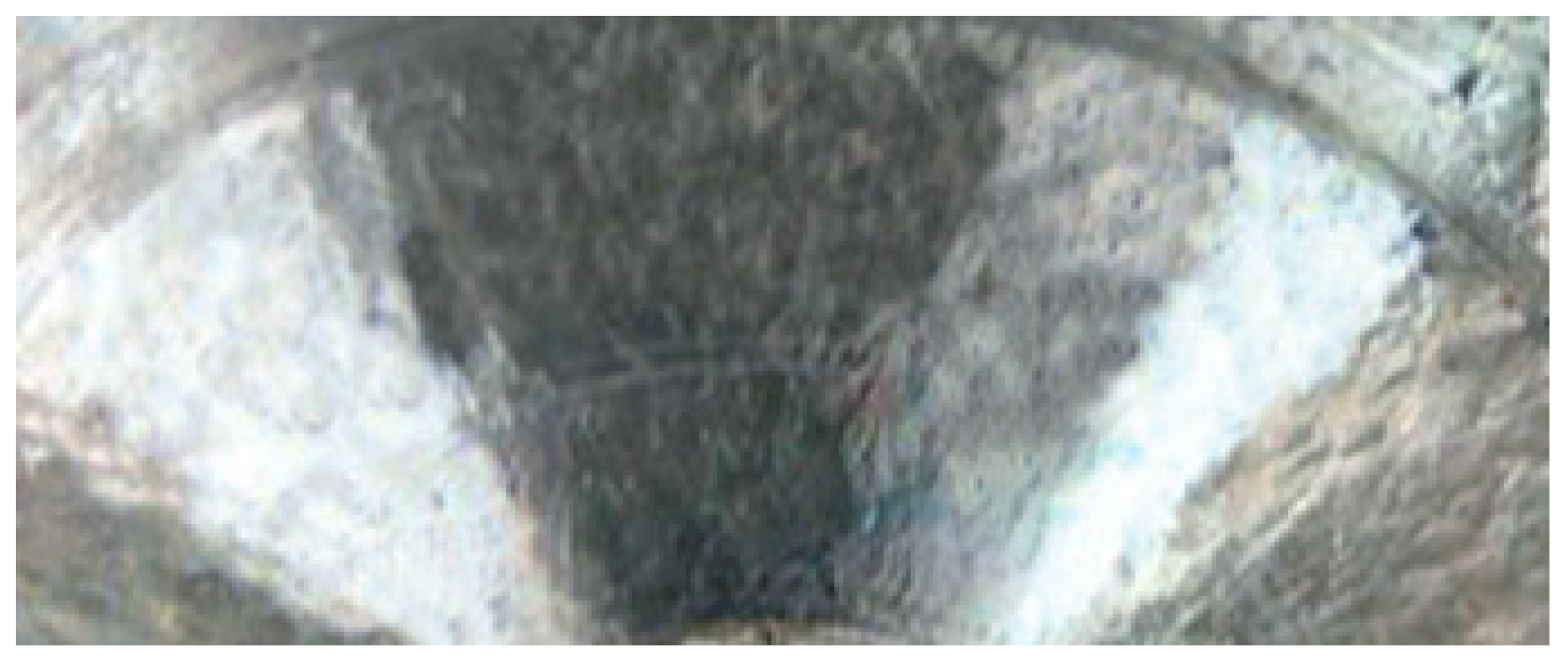
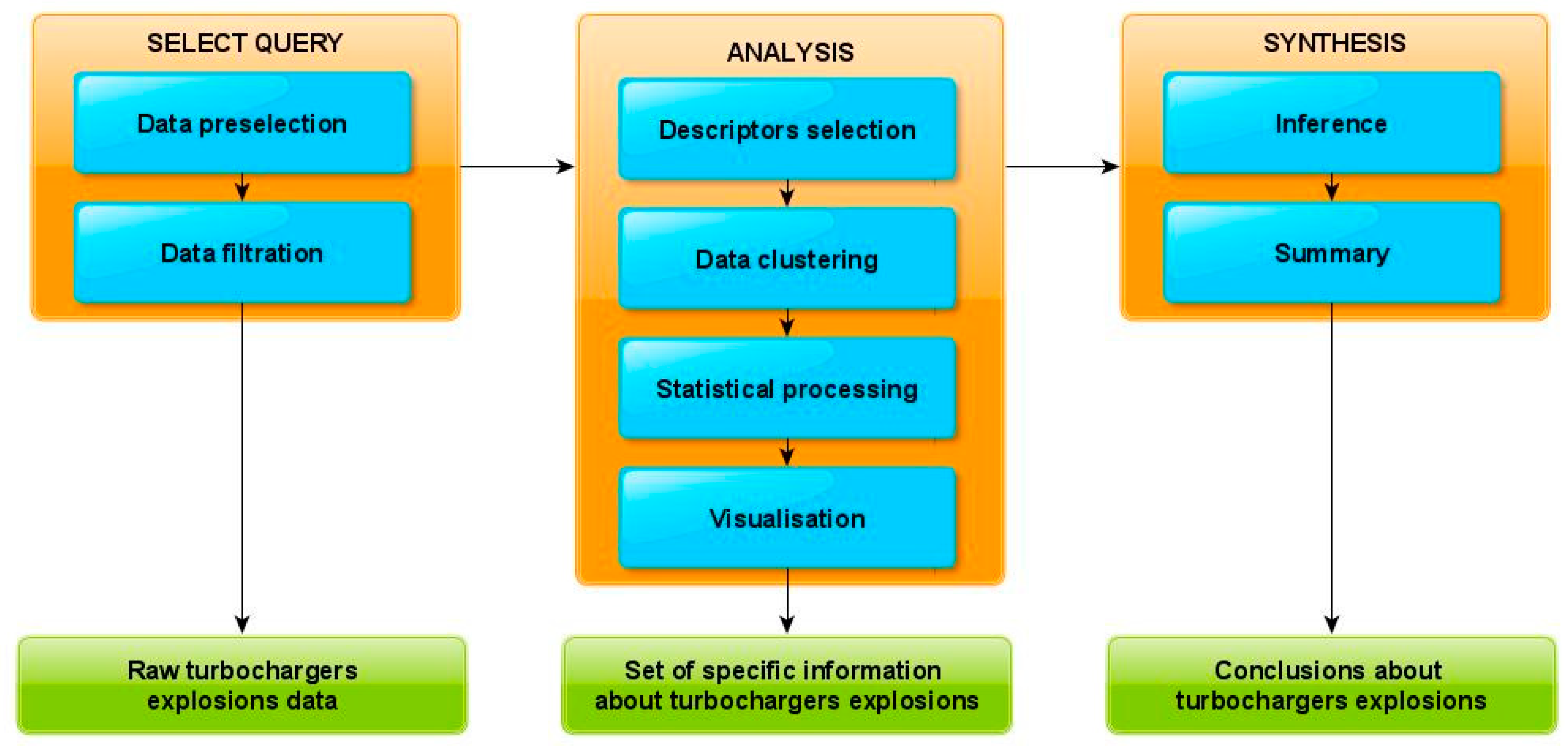
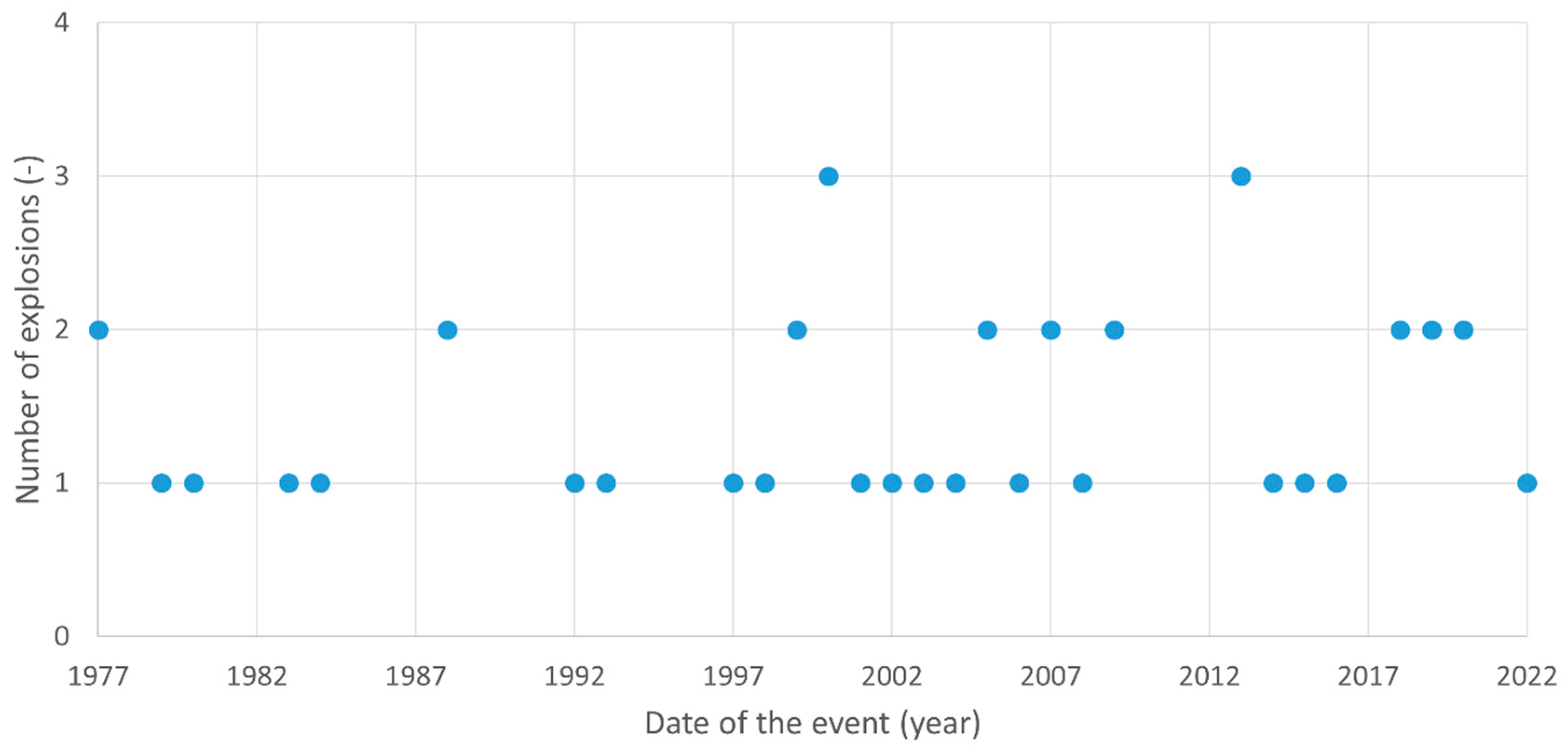
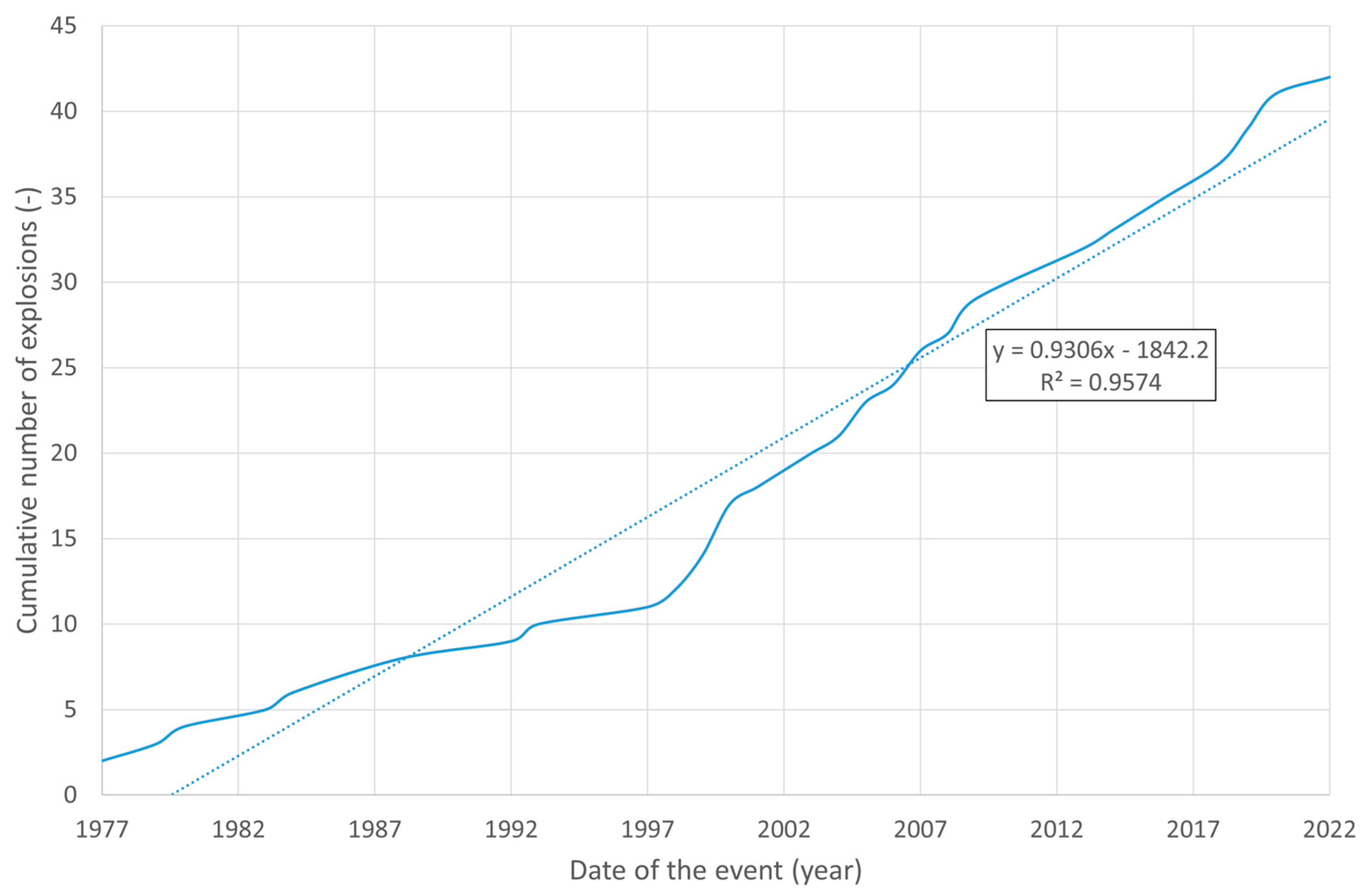
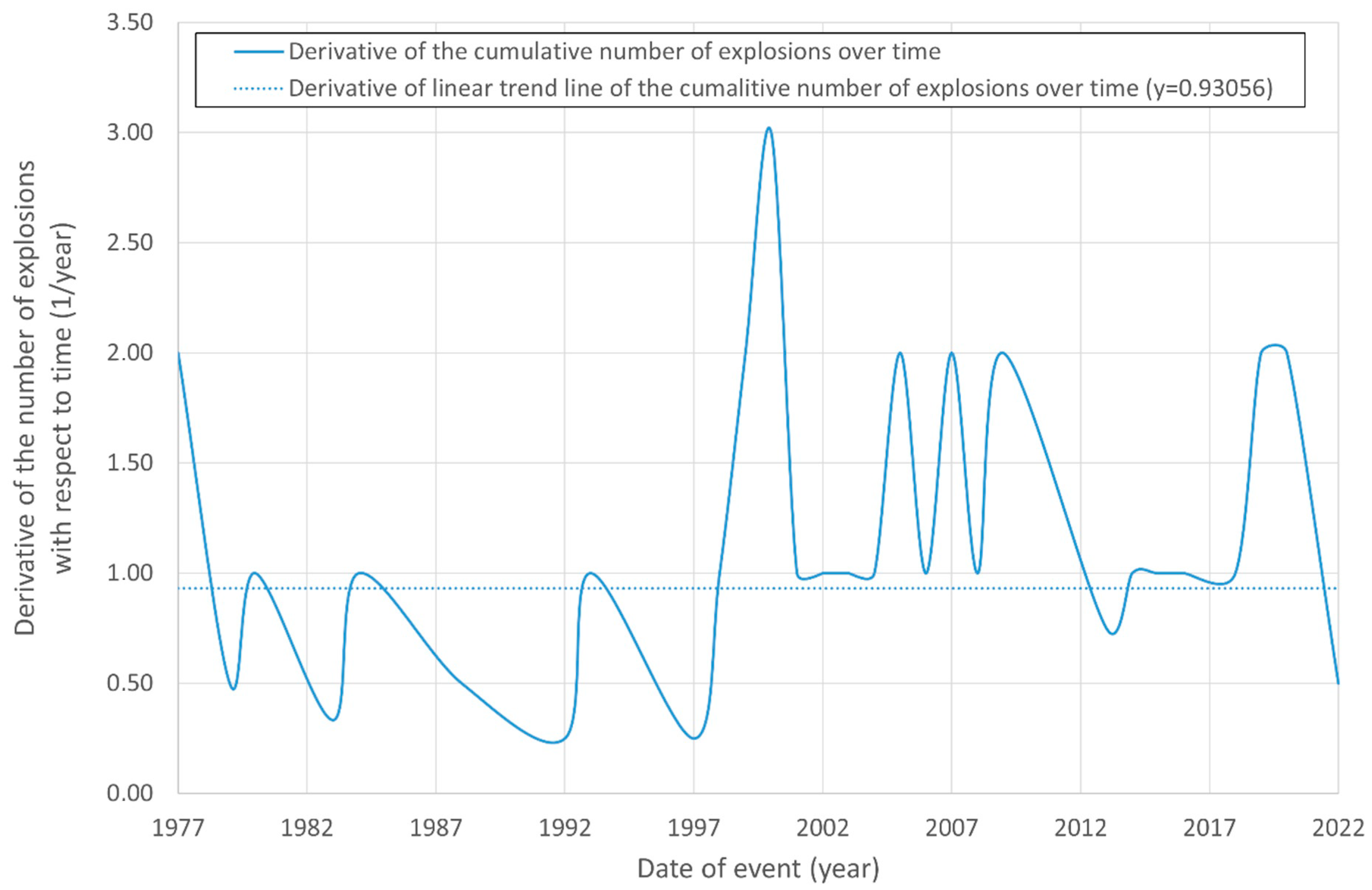

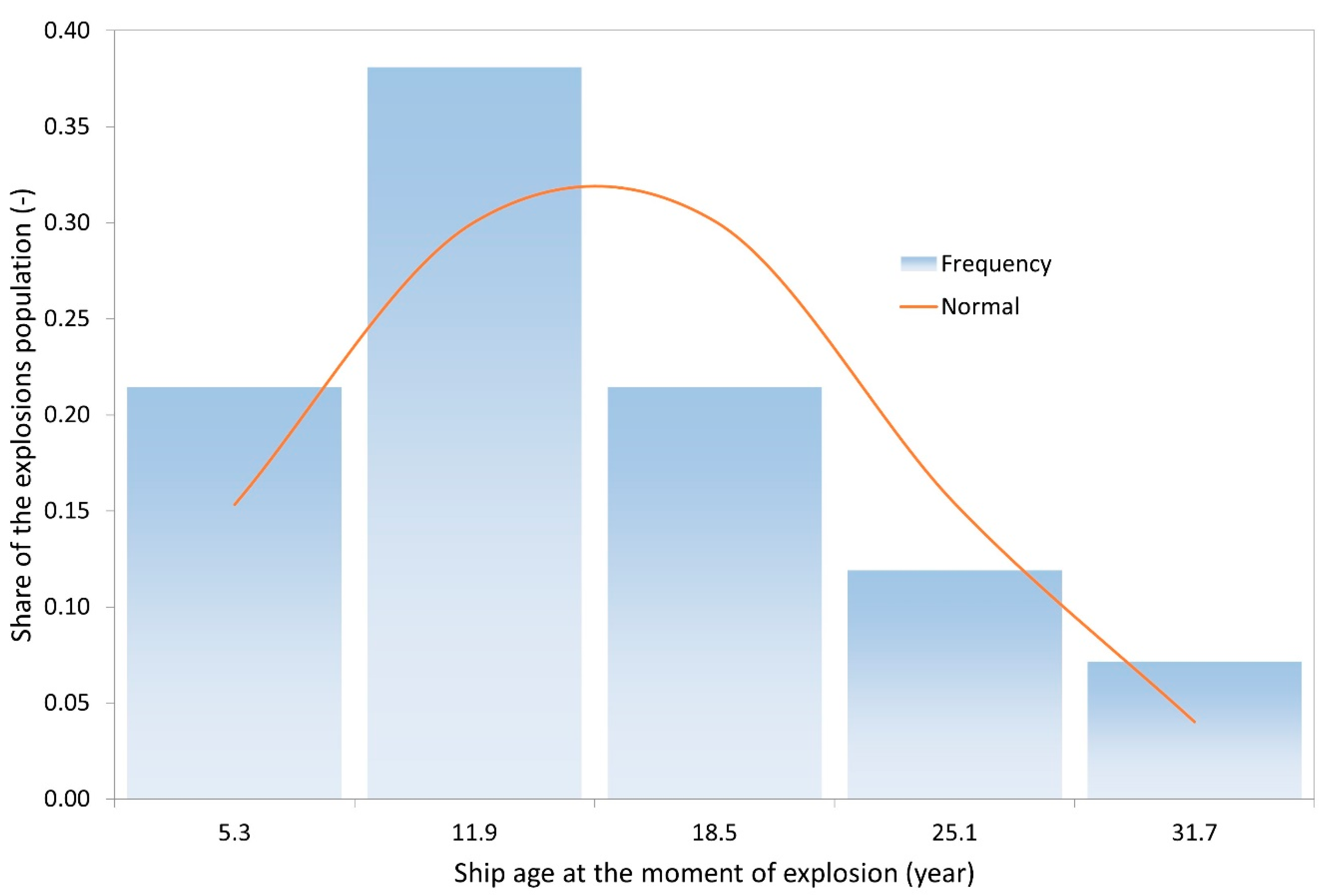
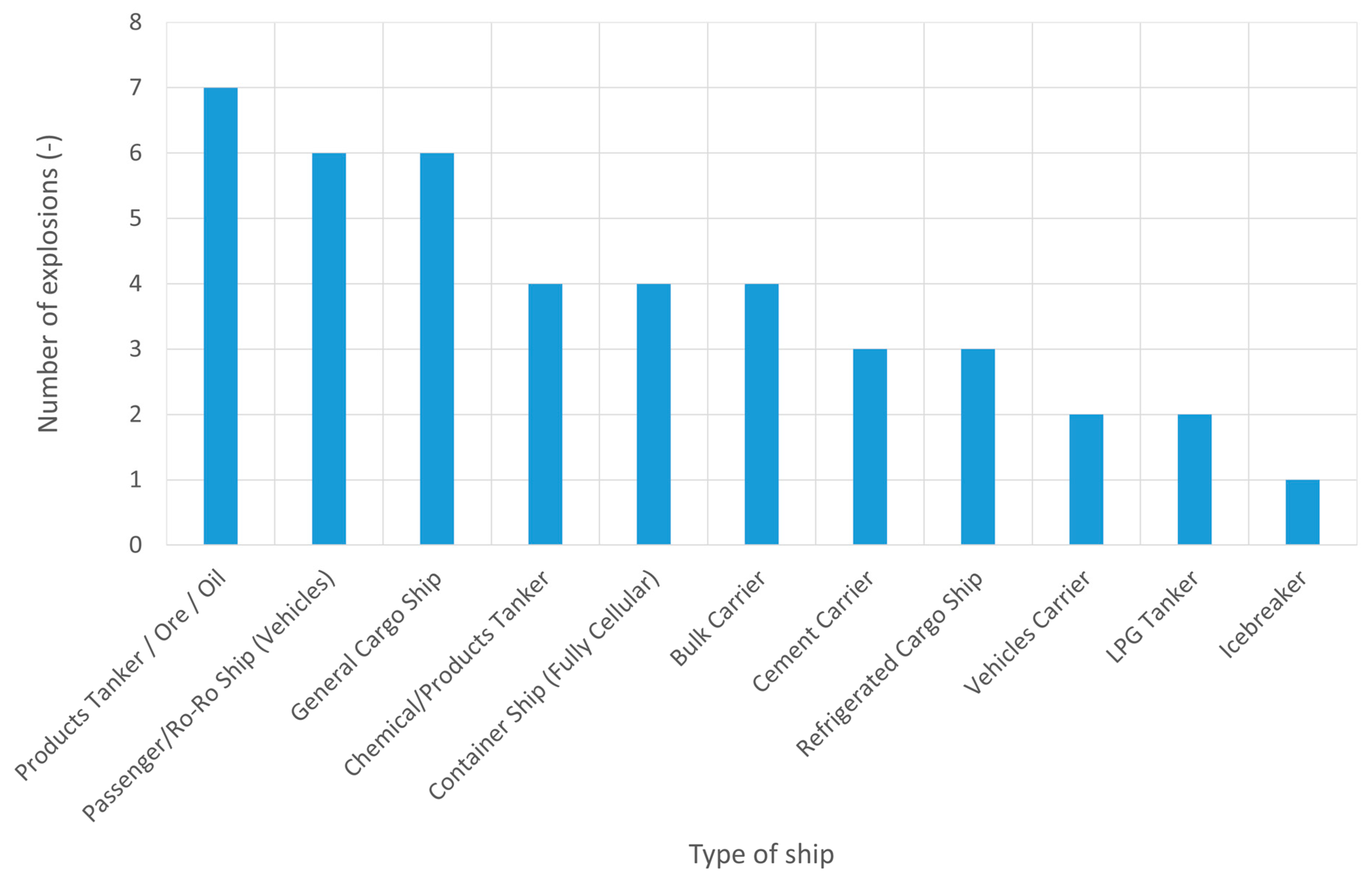
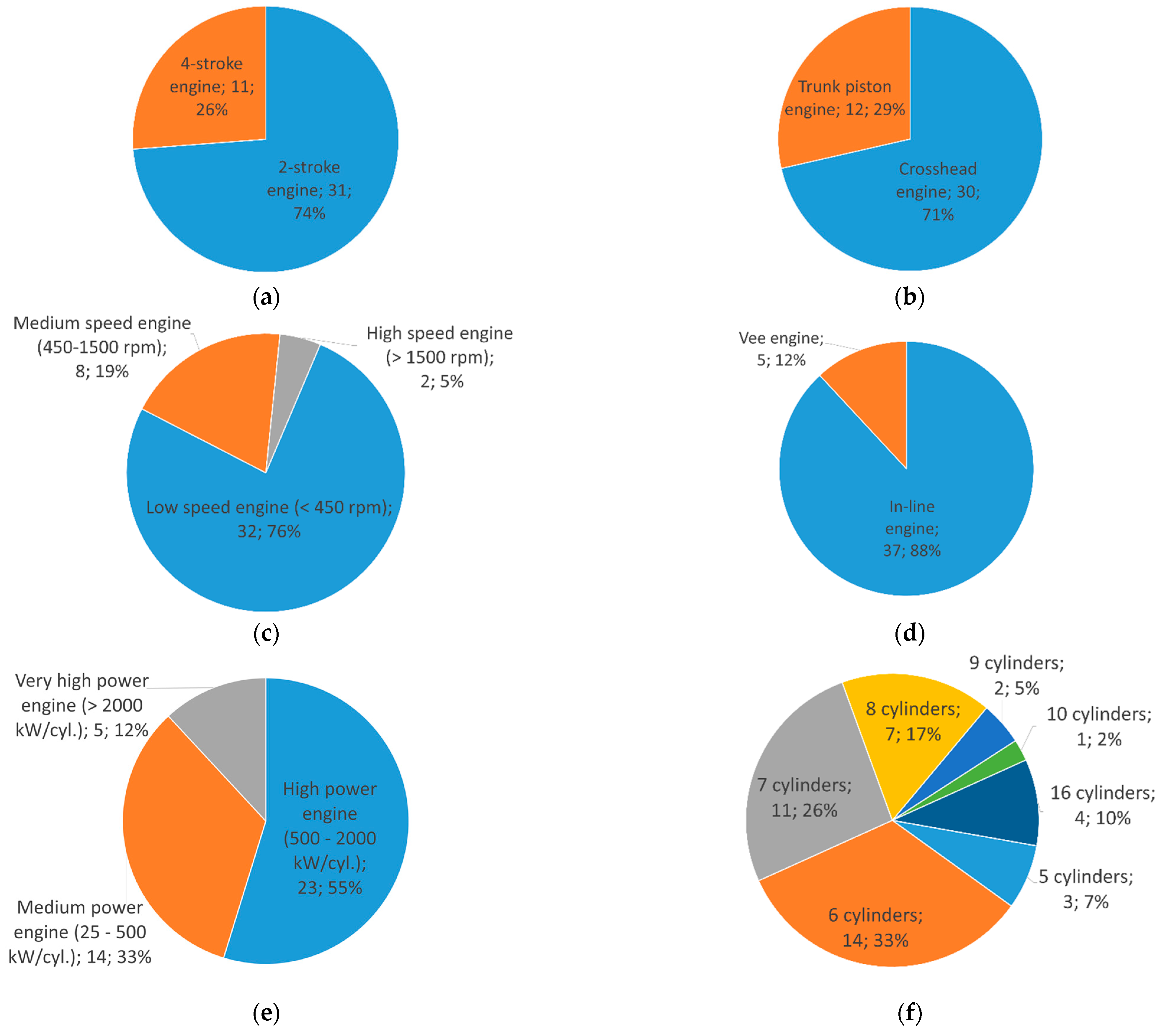
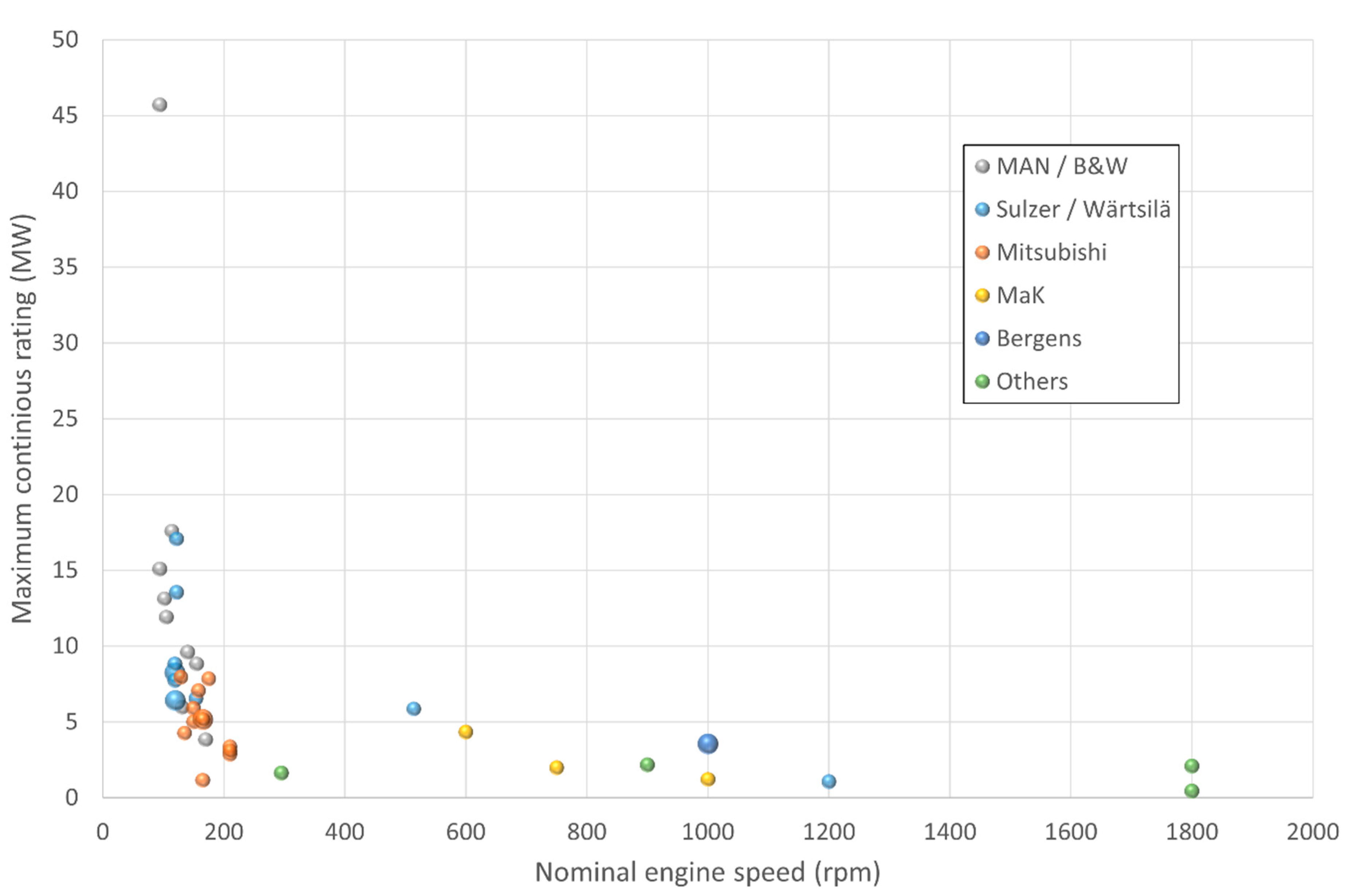

Disclaimer/Publisher’s Note: The statements, opinions and data contained in all publications are solely those of the individual author(s) and contributor(s) and not of MDPI and/or the editor(s). MDPI and/or the editor(s) disclaim responsibility for any injury to people or property resulting from any ideas, methods, instructions or products referred to in the content. |
© 2023 by the authors. Licensee MDPI, Basel, Switzerland. This article is an open access article distributed under the terms and conditions of the Creative Commons Attribution (CC BY) license (https://creativecommons.org/licenses/by/4.0/).
Share and Cite
Chybowski, L.; Jakubowski, A.; Żółkiewski, S. Analysis of the Relationship between Selected Ship and Propulsion System Characteristics and the Risk of Main Engine Turbocharger Explosion. J. Mar. Sci. Eng. 2023, 11, 360. https://doi.org/10.3390/jmse11020360
Chybowski L, Jakubowski A, Żółkiewski S. Analysis of the Relationship between Selected Ship and Propulsion System Characteristics and the Risk of Main Engine Turbocharger Explosion. Journal of Marine Science and Engineering. 2023; 11(2):360. https://doi.org/10.3390/jmse11020360
Chicago/Turabian StyleChybowski, Leszek, Andrzej Jakubowski, and Sławomir Żółkiewski. 2023. "Analysis of the Relationship between Selected Ship and Propulsion System Characteristics and the Risk of Main Engine Turbocharger Explosion" Journal of Marine Science and Engineering 11, no. 2: 360. https://doi.org/10.3390/jmse11020360
APA StyleChybowski, L., Jakubowski, A., & Żółkiewski, S. (2023). Analysis of the Relationship between Selected Ship and Propulsion System Characteristics and the Risk of Main Engine Turbocharger Explosion. Journal of Marine Science and Engineering, 11(2), 360. https://doi.org/10.3390/jmse11020360








